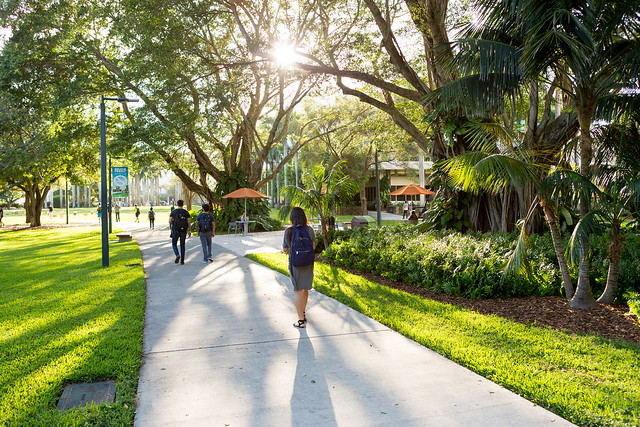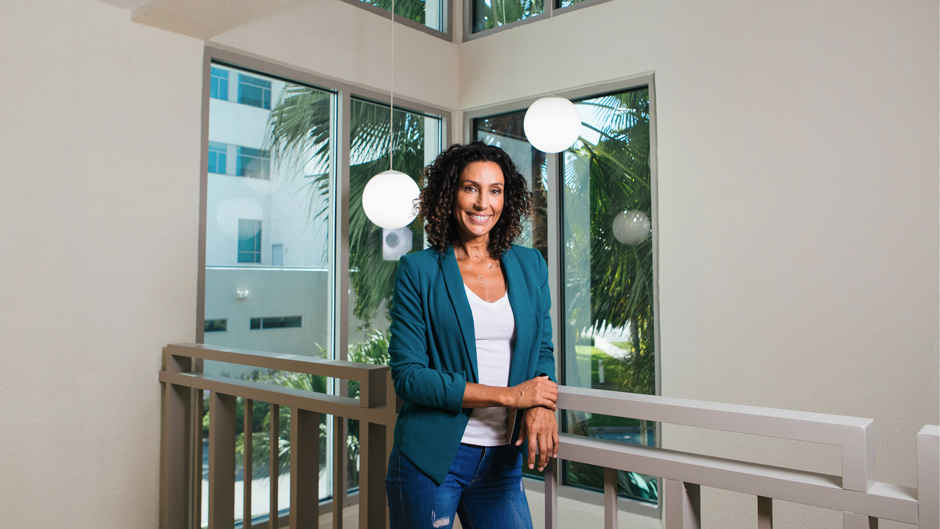
I don’t think you can be an effective professor without connecting with your students—finding some point of commonality or being able to place yourself in their shoes. But perspectives vary, not in small part by where the students are in their educational journey. So how do I connect with a UM student-athlete? A grad student balancing career along with coursework? A doctoral candidate half-buried in research articles, theories, and writing (soooo much writing)? Oddly enough, I have a little bit of insight on each of these, as I have the somewhat strange distinction of completing my bachelor’s, master’s, and doctoral degrees at the U. And while this is definitely not the recommended educational trajectory that your advisor would lay out for you, I think it’s given me a unique perspective as I connect with students in my various roles of professor, research mentor, and director of our undergraduate teacher preparation program in the School of Education and Human Development.
For my undergrad student-athletes who are juggling the intense demands of their Division I athletic schedule with the challenges and opportunities that every other undergrad is facing academically, I can relate. When I was an athlete, the NCAA had a commercial prioritizing education with the slogan, “Because 98% of athletes go pro in something other than sports.” And though at the time, that commercial sounded a lot like, “Get a plan B, kids! You probably won’t make it!” now I see the truth in it. My advice to current student-athletes would be to take advantage of the educational opportunities in front of you—to think not just about your next game, meet, or competition, but about what follows after graduation. (Full transparency: this was not my own approach as a student-athlete!)
For the master’s students I teach, who have some work experience under their belt and are at UM to hone their practice and expand their expertise, I remember how important relevance was to me when I was in their shoes. I knew the theories and the models—I was looking for best practices to improve my effectiveness as a teacher, to reach disengaged students, and to support and challenge my struggling learners. In every grad class I teach today, I keep at the forefront this question: “So what?” In other words, how does this relate to improved practice? How can it be implemented in the unique context of the classroom? How does it fit amongst the mandates and expectations already overcrowding the school hours? I need to ensure that what these in-service teachers get is explicit connections between research and practice resulting in techniques/strategies that enhance their students’ educational experiences.
When it comes to research, whether it be doctoral students who are progressing through their dissertation or undergraduate students completing their research honors project, I try to emphasize process. When I started my own dissertation, my mentor underscored the fact that a successful research study does not significantly advance the field; at best, it moves it one tiny step forward. That takes some adjustment, defining success as the small contribution of knowledge through sound and replicable research. It’s far less glamorous than the field-shaking discoveries many students dream of, but it’s more realistic and often more valuable. This is the perspective I try to convey to the students engaged in research now: Small steps. Sound methods. Research is a process.
At the end of the day, we all connect best with others when we find something shared. Teaching is no different. Students who enroll in my classes and work with me on research are there because they are interested in the topic—but that’s the easy part. For me, it’s the deeper connections through an understanding of students’ interests, goals, and aspirations, which require more investment but have the potential to be infinitely more rewarding for all of us.

